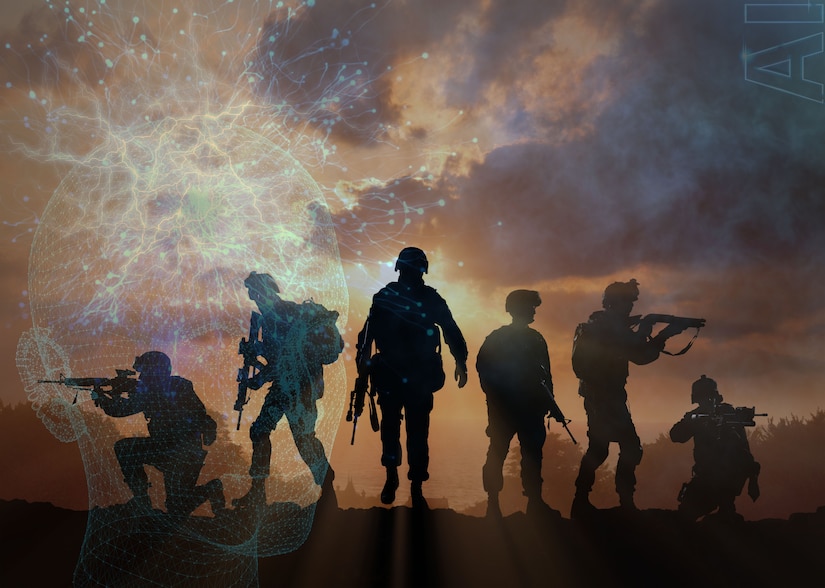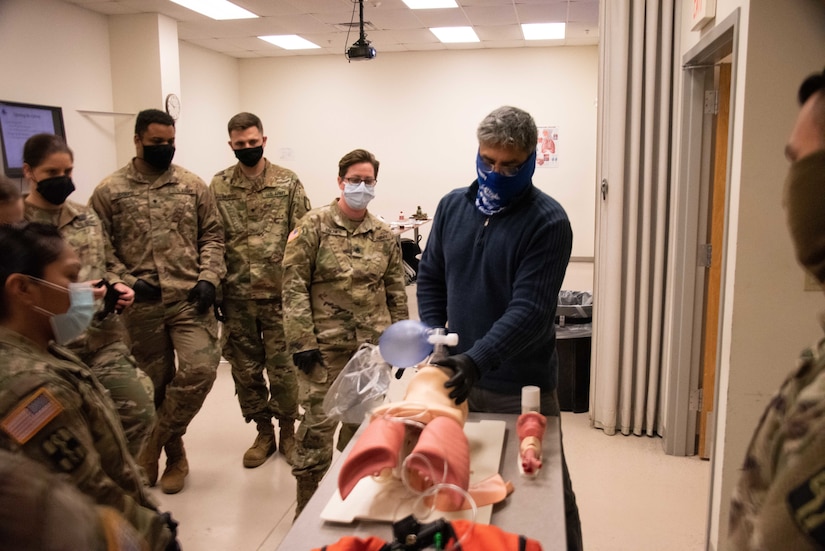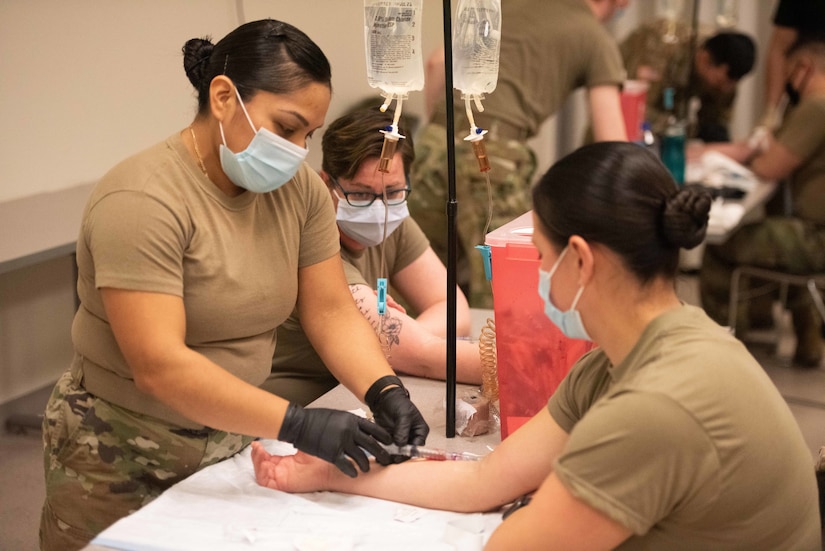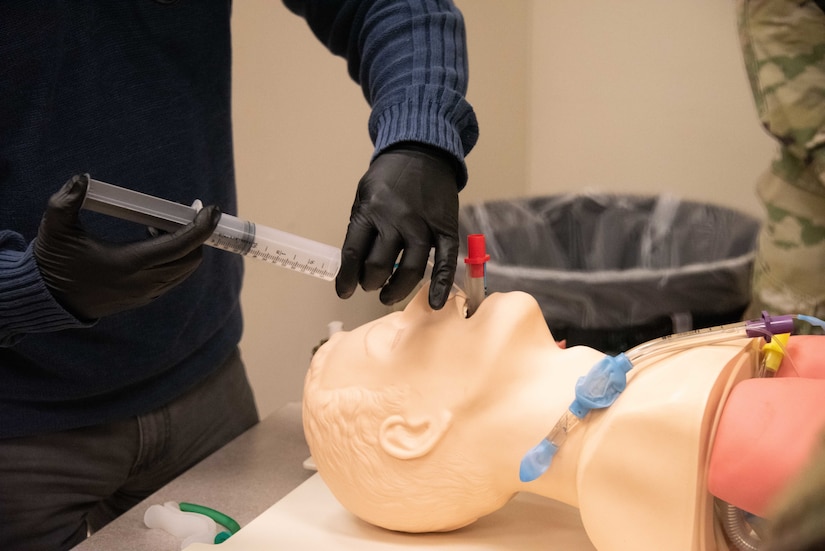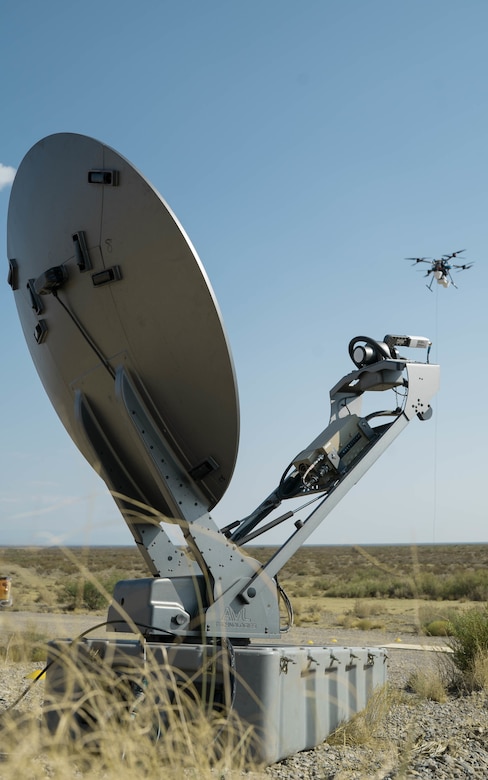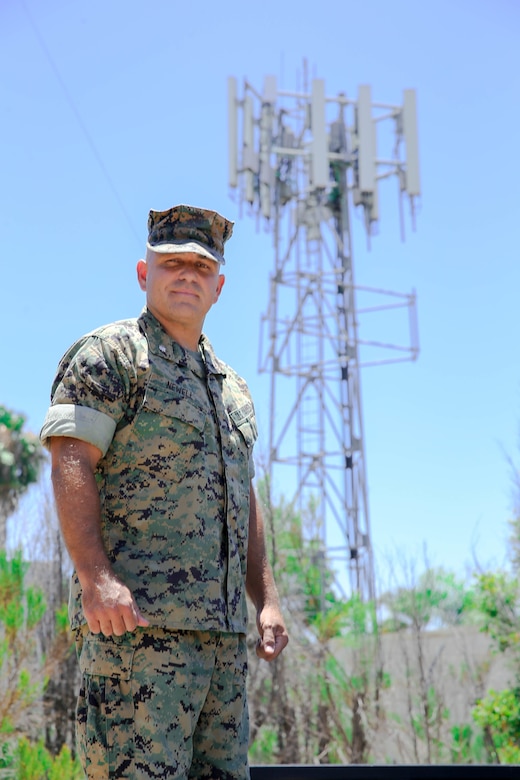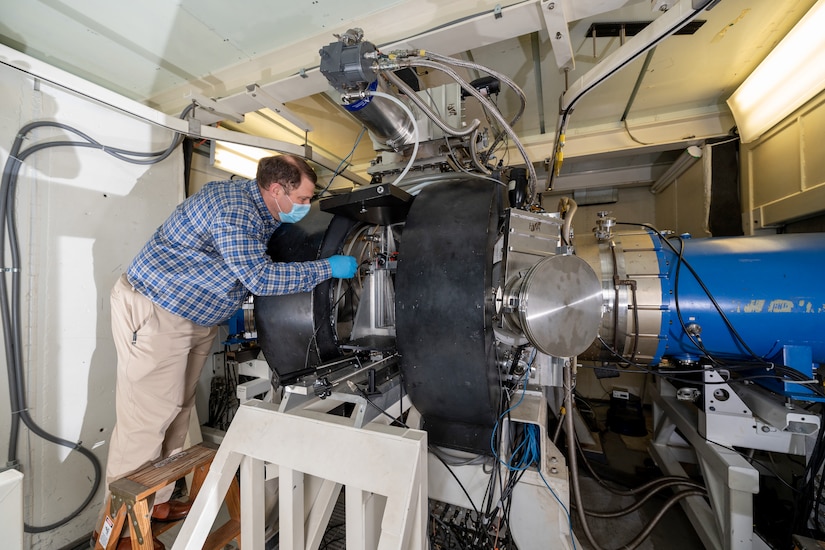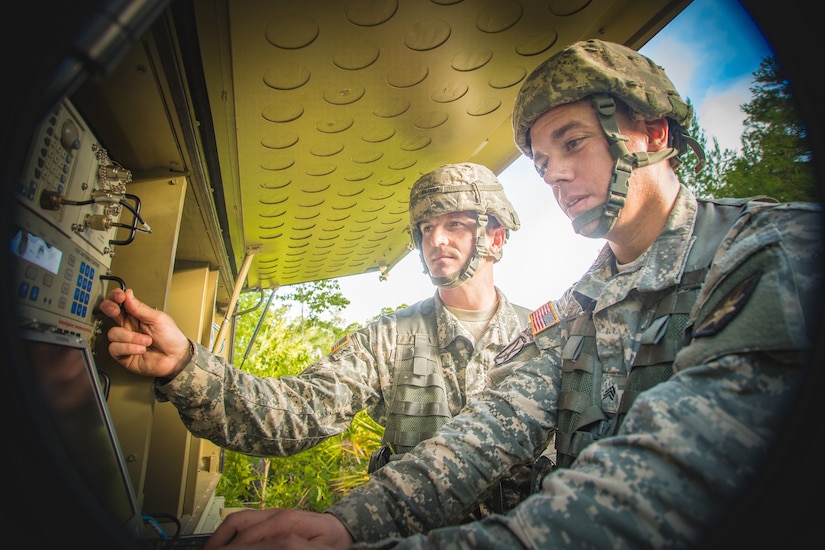March 10, 2021
|
BY Lori Newman
, Brooke Army Medical Center
Brooke Army Medical Center opened a new infusion
clinic to help high risk COVID-19 patients with moderate to mild
symptoms at Joint Base San Antonio-Fort Sam Houston, Texas.
The treatment involves IV infusion of investigational antibody
medications that are not Food and Drug Administration approved but are
authorized under an FDA emergency use authorization.
"The goal of this treatment is to halt the progression of COVID and
to hopefully prevent inpatient admission," said Air Force Maj. (Dr.)
Joseph Yabes Jr., Infectious Disease Clinic officer in charge. "Overall,
people have had good responses to this therapy."
The infusion therapy can be given to patients 12 years and older who
weigh at least 88 lbs. However, patients who are more than 65 years old
and those with a body mass index over 35 have benefited the most from
the treatment.
"People who are immunocompromised, diabetic, or people who are age 55
with hypertension or COPD [chronic obstructive pulmonary disease] may
also benefit from this therapy," Yabes explained.
A primary care manager must refer the patient to the COVID-19
Infusion Clinic. If the patient meets the criteria, someone from the
infusion clinic will contact them to schedule the appointment. Once the
patient arrives at BAMC, they have a designated parking space and are
instructed to call the clinic.
"We don't want to bring someone who is acutely sick with COVID and
infectious to sit next to someone who is immunocompromised," Yabes said.
"The clinic was opened to provide a safe and monitored environment to
facilitate antibody infusion and to prevent potential exposures to
others."
After the patient calls the clinic, a technician goes to meet the
patient and escorts them from the entrance to the clinic to ensure they
don't get lost. Once in the clinic, a nurse takes their vital signs to
ensure they don't need to be admitted to the hospital for treatment.
"The goal of this is to prevent hospital admission," Yabes said. "If
you are at the point where you need to be admitted to the hospital, the
best course of action is to be admitted and receive alternative
therapies not a monoclonal antibody."
Once the patient reviews the disclosure documents and agrees to the
treatment, the pharmacy begins to prepare the medications. The
technician retrieves the medication from the pharmacy and starts the
infusion process. The patient is continually monitored during the
infusion process, which takes about an hour. After the infusion is
complete, the patient is monitored for another hour before leaving the
clinic.
"During the treatment, the patient can watch TV, read, listen to
music or just relax," Yabes said. "We do ask that they keep their masks
on at all times and not eat or drink while they are here."
Currently, the COVID-19 Infusion Clinic can support up to four
patients per day. Prior to the clinic opening, patients were able to
receive the antibody infusion therapy in the emergency department.
Retired Army Command Sgt. Maj. Paul Cardona, 69, and his wife,
retired Army Sgt. 1st Class Marie Cardona, 66, tested positive for
COVID-19 and fit the criteria for the monoclonal antibody therapy.
"I was provided literature about the treatment, and the clinic called
me to see if I would be interested in receiving the treatment," Paul
Cardona said. "Before I received the treatment, I was feeling pretty
bad."
He had a sore throat, headache, chills and body aches.
"I was hurting all over," he said. "As soon as I received the
antibody treatment, within days, my symptoms started to calm down and
went away. I started feeling 100 times better."
Marie Cardona's COVID-19 symptoms included extreme fatigue, body aches, cramps and an intense headache.
"I would walk into the living room and pass out on the couch," she
said. "The body aches and cramping would wake me up in the middle of the
night. I wasn't able to sleep because I was in so much pain."
"I had seen the reaction Paul had to the treatment, so I went in and
did it," she said. "The first night after the treatment I didn't see a
difference, but the next day the cramps, body aches and the headache
were better."
People who have already received their COVID-19 vaccination are not
eligible for this treatment, and patients who receive the infusion
therapy should wait at least 90 days before getting the COVID-19
vaccine.
So far, BAMC has provided the antibody therapy treatment to 59 patients. Of those, only five required hospital admission.
The Cardona's were thankful they were able to receive the monoclonal antibody infusion therapy.
"They have a bunch of professionals in that clinic," Paul Cardona
said. "The nurses constantly monitored me throughout the treatment and
told me exactly what was happening."


